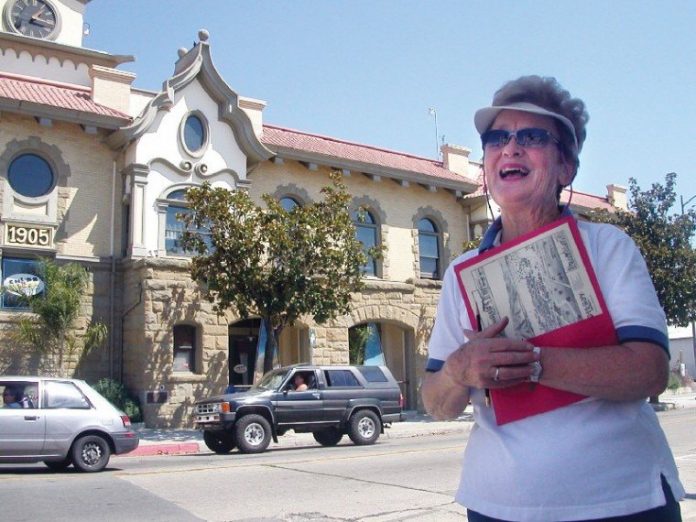If Gilroy were an onion, you’d have to peel through outer layers
of outlet malls and new developments, expansions and new parks to
get to a layer inside that people sometimes forget: the historical
buildings that populate downtown.
Gilroy – If Gilroy were an onion, you’d have to peel through outer layers of outlet malls and new developments, expansions and new parks to get to a layer inside that people sometimes forget: the historical buildings that populate downtown.
One way to reconnect with the city’s past is to take the free walking tours guided by Connie Rogers, president of the Gilroy Historical Society and keeper of many memories.
Geographically, most of the tours throughout the year center around a few square blocks in historic downtown. In fact, for many decades the town wasn’t much more than that, the guide said.
“They say on Fifth Street you can see several decades of Gilroy history, from 1860 through 1920,” Rogers said.
It’s easy to see what remains or what has become of historical buildings but it take a guided tour to find out what the transitions were. Looking at the many churches from the early 1900s on – Rogers points out – Church Street, she spots a small white one that she says was moved several blocks from its original location, using a system of logs and horse carriages.
As the walk unfurls, one can begin to understand the layout of the buildings in conjunction with their specific original usage. Monterey Road, Rogers explains, was once one of the principal roads travelers took on trips between San Francisco and Los Angeles.
Thus it would make sense that Gilroy, hardly more than a commercial outpost in its infancy would develop off of that main street. When the town afforded itself a proper train station in 1918 between Seventh and Eighth Street, it spawned the building of hotels across the street: the Cherry Blossom and the Louis in 1921 and the Milias in 1929 where merchants could sleep over and travelers stop for a drink.
Sometimes residents became unwitting parts of the tour, standing like museum actors on their porches which belong to Victorian houses or bungalows or dwelling in other styles they themselves seem unaware of.
Among the most appreciable things about the tour is its informality. As a longtime Gilroyan who has worn many hats in the community, Rogers has the ability to add color with history she has taken part in shaping. The old train station was closed down in 1991 until the city was able to regain control of it in 1997. During that time the building had been boarded up, broken into, gratified and generally left in bad shape. As a city councilmember during that time, Rogers spearheaded the efforts – “surprise, surprise,” she said with a wink – to approve $900,000 worth of renovation work.
There are two remaining tours this year, an Oct. 6 look at buildings built by the influential architect William Weeks and, Nov. 3, of the Old St. Mary Cemetery.
The free walking tours meet at 10am in front of the Gilroy Museum and last about two hours. For more information call 846-0446.















